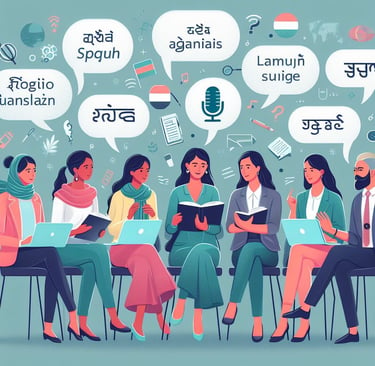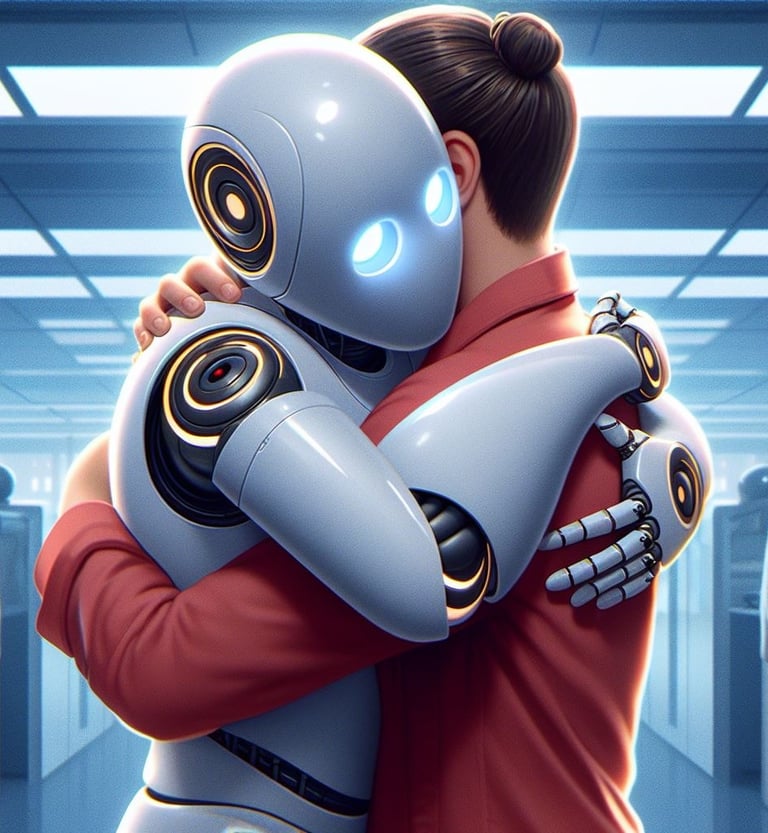

What is AI and why is it helpful?
In the dynamic landscape of technology, Artificial Intelligence (AI) has emerged as a transformative force across diverse industries, fundamentally altering the way we approach problem-solving and innovation.
Unveiling the Historical Tapestry of AI:
Artificial Intelligence, as a concept, dates back to the mid-20th century when visionaries first conceptualized machines that could simulate human intelligence. However, it was only in recent years that AI has transitioned from theoretical concepts to practical, real-world applications. The historical journey of AI is marked by various breakthroughs, fueled by advancements in computing power, data availability, and evolving machine learning algorithms.
The Contemporary Surge in AI:
In the last decade, we've witnessed an unparalleled surge in the application of AI across diverse sectors. This surge can be attributed to the convergence of factors such as increased computational capabilities, vast datasets, and breakthroughs in machine learning methodologies. From healthcare to finance, and from manufacturing to customer service, AI is leaving an indelible mark, streamlining processes, and enhancing overall efficiency.
Exploring Generative AI:
A pivotal aspect of AI's recent advancements is the advent of generative AI. This subset of artificial intelligence enables systems to generate human-like content, transcending traditional programming limitations. Generative AI has found applications in diverse fields, from creating art and music to generating realistic text and language translations. The ability of these systems to understand context and produce coherent output is reshaping how we interact with technology and information.
Large Language Models - A Revolutionary Leap:
Central to the recent AI revolution is the development of Large Language Models (LLMs). These sophisticated models, exemplified by OpenAI's GPT series, have redefined natural language processing. With the capability to understand complex linguistic nuances and generate contextually rich content, LLMs have applications ranging from content creation and chatbot interactions to data analysis and beyond.
AI's Expansive Reach:
While the focus here has been on the transformative potential of AI, its applications extend far beyond the realms explored in this article. AI is driving innovation in autonomous vehicles, healthcare diagnostics, financial predictions, and more. It is becoming an integral part of our daily lives, shaping a future where intelligent systems collaborate seamlessly with humans, augmenting our capabilities and propelling us into new frontiers of discovery.




AI in the translation and localization industry
AI technologies have ushered in a new era of efficiency and precision in the translation and localization industry. Machine Translation (MT), powered by advanced neural networks, has significantly improved the accuracy and fluency of translated content. Natural Language Processing (NLP) algorithms play a crucial role in understanding context, idiomatic expressions, and cultural nuances, ensuring that translations resonate authentically with diverse audiences.
The Coexistence of AI and Human Expertise:
Contrary to concerns about AI rendering human translators obsolete, the prevailing sentiment in the industry is that AI and human expertise can coexist synergistically. While AI excels at processing vast amounts of data quickly, human translators bring cultural sensitivity, creativity, and a deep understanding of context to the table. The collaborative integration of AI tools allows translators to streamline their workflow, focusing on the aspects that require human intuition and linguistic finesse.
AI as a Productivity Catalyst:
AI in translation is not about replacing human translators but amplifying their capabilities. Translation Memory (TM) systems, powered by AI, store and retrieve previously translated content, reducing redundancy and enhancing productivity. This allows translators to concentrate on more complex and context-specific elements, ensuring a higher quality of output within shorter timeframes.
The Evolution of AI-Assisted Workflows:
As technology advances, AI is becoming an indispensable part of the translator's workflow. Cloud-based translation platforms leverage AI to offer collaborative environments where translators can work seamlessly, sharing insights and refining translations in real-time. This evolution signifies a shift towards more dynamic and efficient translation processes.
The Human Touch in Translation:
While AI continues to play a pivotal role in translation and localization, the human touch remains irreplaceable. Cultural nuances, tone, and the ability to adapt to context are areas where human translators excel. AI can enhance efficiency, but it is the unique capabilities of human translators that ensure translations resonate authentically with diverse audiences.
Looking to the Future:
The future of AI in the translation and localization industry holds exciting possibilities. Continued advancements in AI technologies will likely refine translation processes, making them more intuitive and accurate. As the industry embraces these changes, translators will find themselves at the forefront of a dynamic landscape, where the fusion of AI and human expertise creates translations that are not only linguistically precise but culturally resonant.


Why never use AI
These are some reasons why some will advise to never use AI in the translation industry:
- AI translations may lack accuracy, especially when dealing with languages that differ significantly. This potential inaccuracy can result in misunderstandings and even conflicts.
- Relying too heavily on AI translations, particularly for crucial documents or communications, can introduce errors and inaccuracies. It is essential to incorporate human experts in the review process to ensure precision.
- AI translation tools currently fall short in accommodating the unique requirements of individual users or specific markets. Consequently, translations may not be tailored to meet the distinct needs and preferences of a particular audience or culture.
- AI translation tools can exhibit biases, mirroring the biases present in the data on which they were trained. This bias has the potential to generate inaccurate and misleading translations, or in extreme cases, contribute to the spread of "fake news," hallucinations, and global crises.
- AI translation tools face challenges in capturing the nuanced aspects of human language, such as sarcasm, irony, and humor. This limitation can result in inaccurate and misleading interpretations, creating a disconnect or distancing effect with the intended audience.


Why use AI
These are some reasons why the use of AI in translations is advised:
- AI translation tools excel in rapidly and efficiently translating large volumes of text, offering users significant time and effort savings.
- Unlike human translators, AI translation tools maintain a higher level of consistency, particularly when dealing with extensive text. They are less prone to fatigue or human errors, ensuring a uniform quality in translations.
- AI translation tools seamlessly integrate with various applications such as word processors and email clients. This integration simplifies the translation process for users, eliminating the need to switch between different tools.
- AI translation tools are in a perpetual state of learning and improvement. By being trained on extensive datasets, they have the capacity to learn from mistakes and retain valuable lessons, contributing to ongoing enhancements.
- AI translation tools continually support an expanding array of language pairs, facilitating communication in more languages than ever before and fostering greater global connectivity.
- AI translation tools prove to be more cost-efficient than human translators, especially for handling substantial volumes of text. Their rapid and efficient operation does not incur ongoing salary or benefit expenses.
- There is a growing trend in developing AI translation tools with ethical considerations. These tools can be consciously designed to avoid biases and uphold user privacy, a trend expected to gain prominence over time.
- AI translation tools play a crucial role in preserving endangered languages by facilitating translations between those endangered languages and more widely spoken languages. This application contributes to the conservation and revitalization of linguistic diversity.
In conclusion, AI is reshaping industries and enhancing efficiency, notably in translation. While concerns exist, the coexistence of AI and human translators proves invaluable, offering productivity gains without sacrificing linguistic nuances. As we navigate the future, a balanced integration of AI and human expertise promises precise and culturally resonant translations.
References
Hylak, B. (2023), The Perils and Potential of AI in Translation, Tonguetek Language Consulting.
OpenAi, Accesed on 04.01.2023
